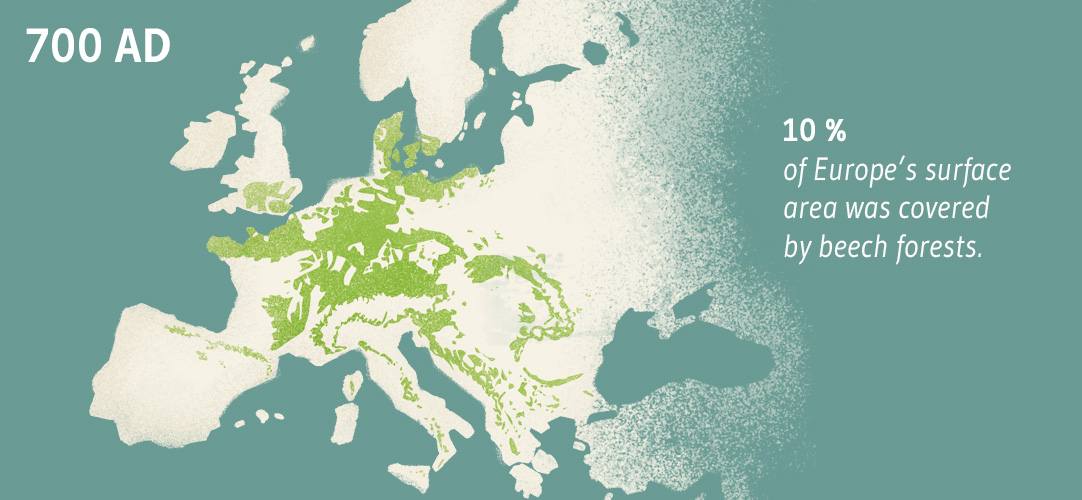Europe’s Wilderness
The World Heritage Site unites and protects the last remnants of untouched, unspoilt, ancient beech forests: Europe’s natural wilderness.
Europe once was wild, woody, and mysterious. The ancient and primeval beech forests of our World Heritage Site are windows in time to a world without human use – the natural state of nature. Nearly all of Europe would look like this, if there were no humans.
Ancient near-natural beech forests are now extremely rare in Europe and are generally found at sites that are difficult to farm or develop. Hence, by international comparison, the beech forest belongs to Europe’s critically endangered habitats, even though the beech as a species is not endangered at all.


Primeval Forests – Ordered Chaos
Over the course of the year, and indeed throughout their life cycle, beech forests undergo highly differentiated stages and processes. Germination, the densely packed juvenile trees during their early years, the decades of competition for space, water and light, maturation into an imposing tree, followed by death and decay.
Without human interference, a largely undisturbed flow of natural processes unfolds. Coming into being and passing away are as much part of everyday life, as are external influences such as windthrow and ice damage. Together, and over decades and centuries, these typical wilderness phenomena shape the forest.


Violet click beetle – a species, dwelling in dead wood


European wildcat
Dead wood – diversity in the shadows
Lonely and silent, the remnants of once vibrant trees seem to face their final decay. But hidden in the decaying wood lives an incredible diversity of organisms that have specialised on this particular habitat.
Dead wood accumulates in unexploited forests, becomes an important habitat and part of the natural cycle. In addition to food, it also provides shelter and cover, places to sleep or hibernate, and opportunities to breed. Woodpeckers chisel their cavities into the trunk or peck at the bark for food. Owls, bats, dormice, and hornets use the caves and crevices as subsequent occupants.
Thus, the greater the diversity of decaying wood in a forest at the same time, the greater the diversity of its species. More than 250 wood-inhabiting species of fungi alone are specialised on the decomposition of beech wood.

The displacement of the beech
Today, all that remains of Europe’s once extensive beech forests are a few isolated remnants of varying size. Due to forestry and the utilisation of timber, we have grown unaccustomed to the sight of ageing and dying trees.
Since the days of Charlemagne (800 AD), large-scale forest clearance has been undertaken to make way for agriculture. The industrial development of the 18th and 19th century would have also been unthinkable without timber as its resource base. From the late 18th century onwards, a critical shortage of timber shifted the emphasis to the cultivation of fast-growing conifers, displacing the beech in many forests.

